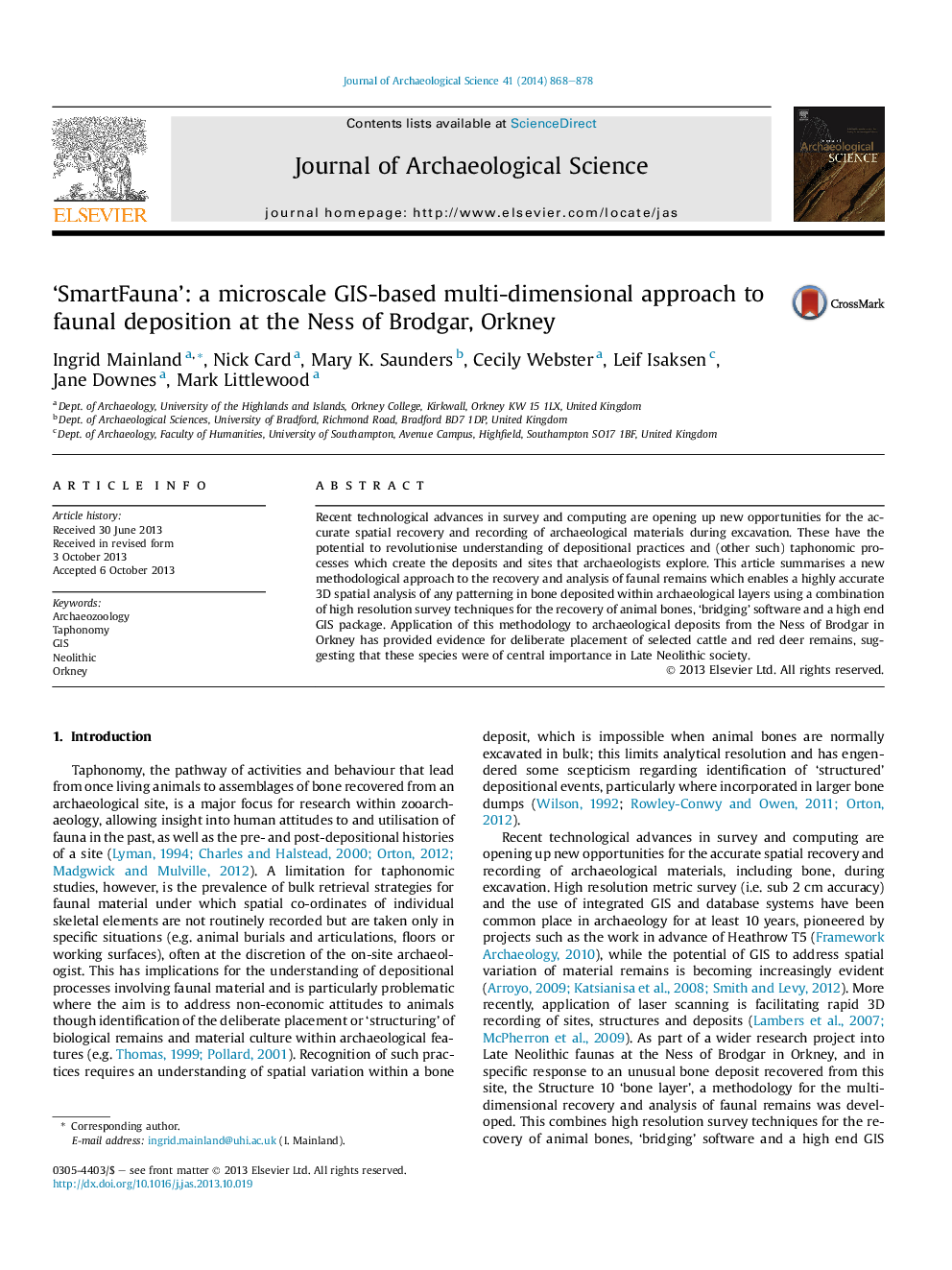| Article ID | Journal | Published Year | Pages | File Type |
|---|---|---|---|---|
| 7444228 | Journal of Archaeological Science | 2014 | 11 Pages |
Abstract
Recent technological advances in survey and computing are opening up new opportunities for the accurate spatial recovery and recording of archaeological materials during excavation. These have the potential to revolutionise understanding of depositional practices and (other such) taphonomic processes which create the deposits and sites that archaeologists explore. This article summarises a new methodological approach to the recovery and analysis of faunal remains which enables a highly accurate 3D spatial analysis of any patterning in bone deposited within archaeological layers using a combination of high resolution survey techniques for the recovery of animal bones, 'bridging' software and a high end GIS package. Application of this methodology to archaeological deposits from the Ness of Brodgar in Orkney has provided evidence for deliberate placement of selected cattle and red deer remains, suggesting that these species were of central importance in Late Neolithic society.
Related Topics
Physical Sciences and Engineering
Materials Science
Materials Science (General)
Authors
Ingrid Mainland, Nick Card, Mary K. Saunders, Cecily Webster, Leif Isaksen, Jane Downes, Mark Littlewood,
